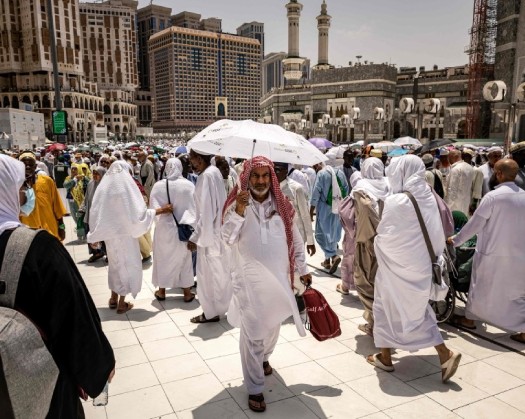The annual haj pilgrimage, a fundamental obligation in Islam, is set to commence on Friday, with an estimated participation of well over one million Muslims from various corners of the globe.
Official records from the previous year indicate that the haj attracted more than 1.8 million pilgrims, as pandemic-related restrictions were lifted and age limitations were abolished.
It is expected that all Muslims, provided they possess the necessary means, fulfill the haj to Mecca, a city strictly off-limits to non-Muslims, at least once in their lifetime.
During this significant event, believers congregate in the sacred city to engage in several days of rituals, retracing the final pilgrimage of the esteemed Prophet Mohammed (PBUH).
Outlined below are the various ceremonies that take place during this momentous occasion, which typically ranks among the largest religious gatherings worldwide.
White garments
Pilgrims are required to enter a state of purity known as ihram, which necessitates specific attire and conduct.
For men, this entails wearing a seamless, robe-like white garment that symbolizes the unity of all believers, irrespective of their social standing or nationality.
On the other hand, women are expected to don loose white dresses that cover their entire bodies, with only their faces and hands visible.
During this sacred journey, pilgrims are strictly forbidden from engaging in arguments, disputes, or any form of sexual activity. Additionally, they must refrain from using perfumes, trimming their nails, or cutting their hair or beards.
Rituals begin
The rituals commence with circling the Kaaba seven times, the large black cubic structure located at the heart of Mecca's Grand Mosque.
Crafted from granite and adorned with a heavily-embroidered cloth inscribed with verses from the Koran, the Kaaba stands at a height of nearly 15 meters (50 feet).
Muslims worldwide direct their prayers towards the Kaaba, as it is believed to have been initially constructed by Adam, the first man, and subsequently rebuilt by Abraham approximately 4,000 years ago.
Following this, pilgrims walk seven times between the hills of Safa and Marwa.
They then proceed to Mina, situated around five kilometers (three miles) away, in preparation for the pivotal pilgrimage rite at Mount Arafat.
Mount Arafat
The pinnacle of the haj is the congregation at Mount Arafat, situated approximately 10 kilometers (six miles) away from Mina, where it is believed that the Prophet delivered his last sermon.
Devotees gather on the elevated hill, standing at a remarkable height of 70 meters (230 feet), along with the vast plain surrounding it. They engage in hours of prayers and recitations from the Holy Quran, remaining there until the evening.
Once the sun sets, the pilgrims make their way to Muzdalifah, which lies midway between Arafat and Mina. Here, they collect numerous pebbles, essential for the symbolic act of "stoning the devil."
'Stoning of the devil'
The final significant ceremony of the hajj takes place in Mina, where pilgrims engage in the act of pelting the devil with seven stones at each of the three solid walls symbolizing Satan.
This ritual is a reenactment of Abraham's act of stoning the devil at the three specific locations where Satan attempted to dissuade him from following God's command to sacrifice his son, Ishmael.
Following the initial stoning, the Eid al Adha feast of sacrifice commences. Sheep are sacrificed, symbolizing the lamb that God provided as a substitute for Ishmael, in a ceremony that occurs simultaneously worldwide.
Subsequently, men either shave their heads or trim their hair, while women cut a fingertip-length portion of their locks.
The pilgrims have the opportunity to revert to their regular attire after which they can resume their circumambulation of the Kaaba and conclude their stone-throwing rituals before embarking on their journey back home.
Four additional pillars
The haj represents the final pillar of Islam.
The remaining four pillars include: declaration of faith, daily prayers, giving of alms, and fasting from sunrise to sunset throughout the sacred month of Ramadhan.









